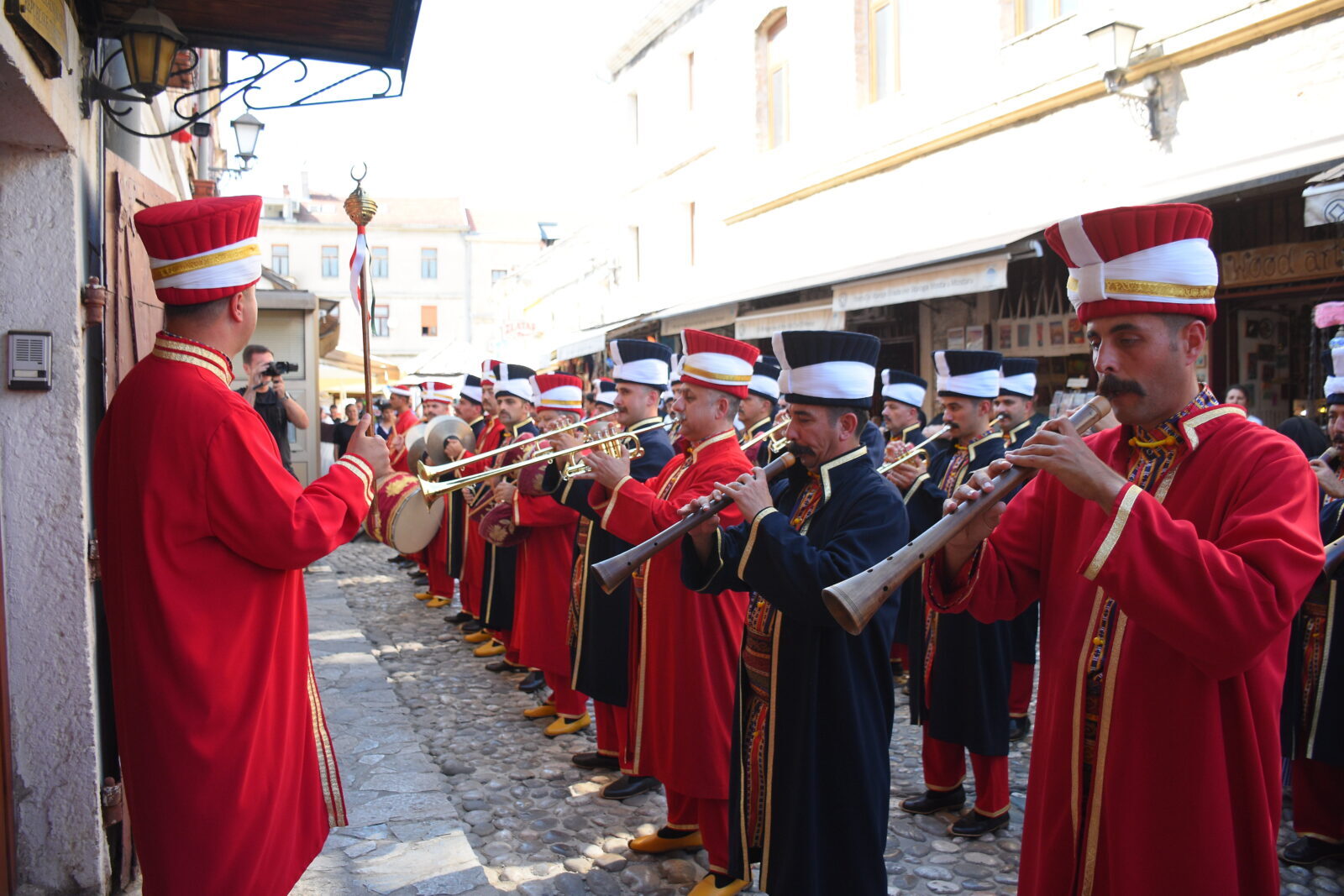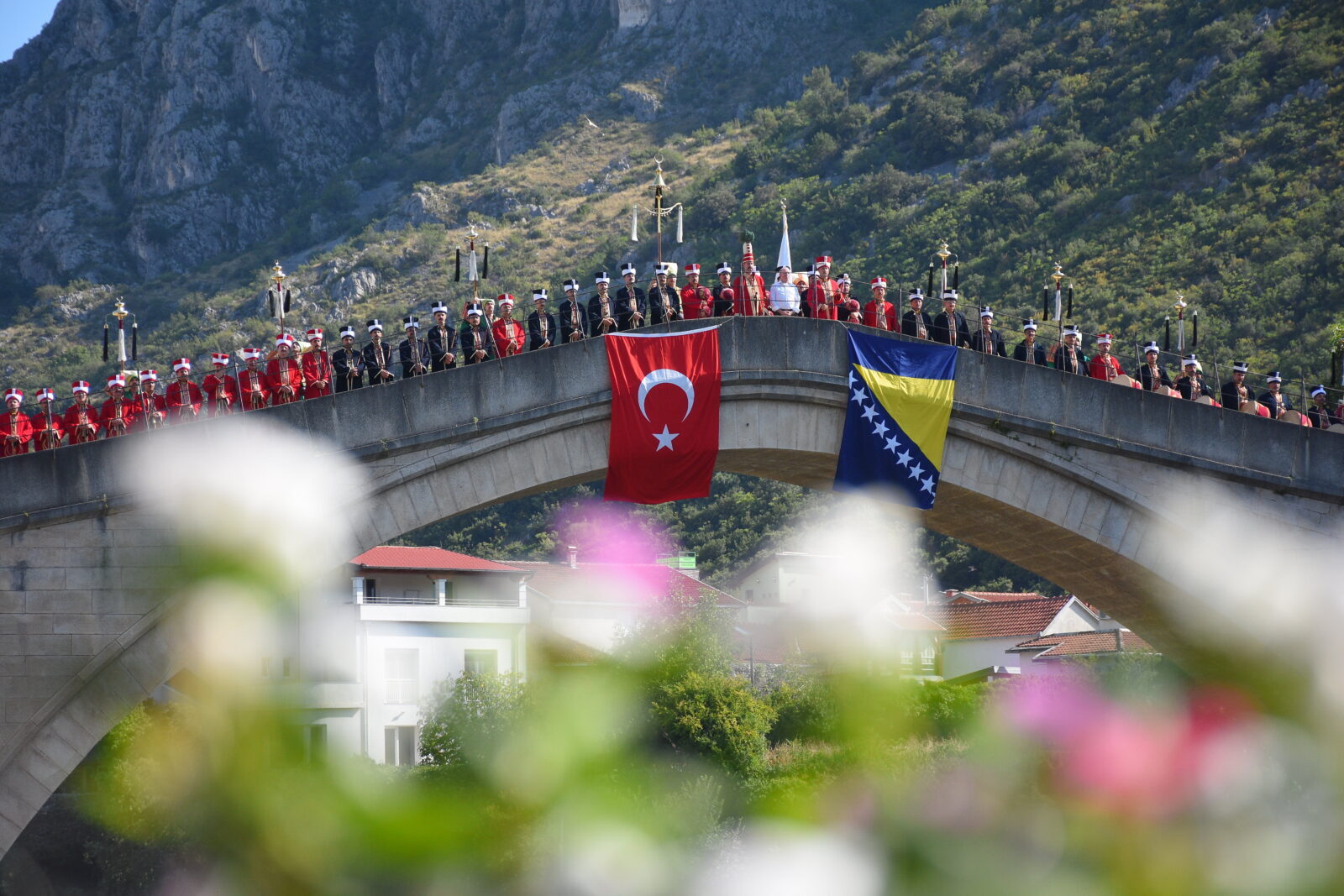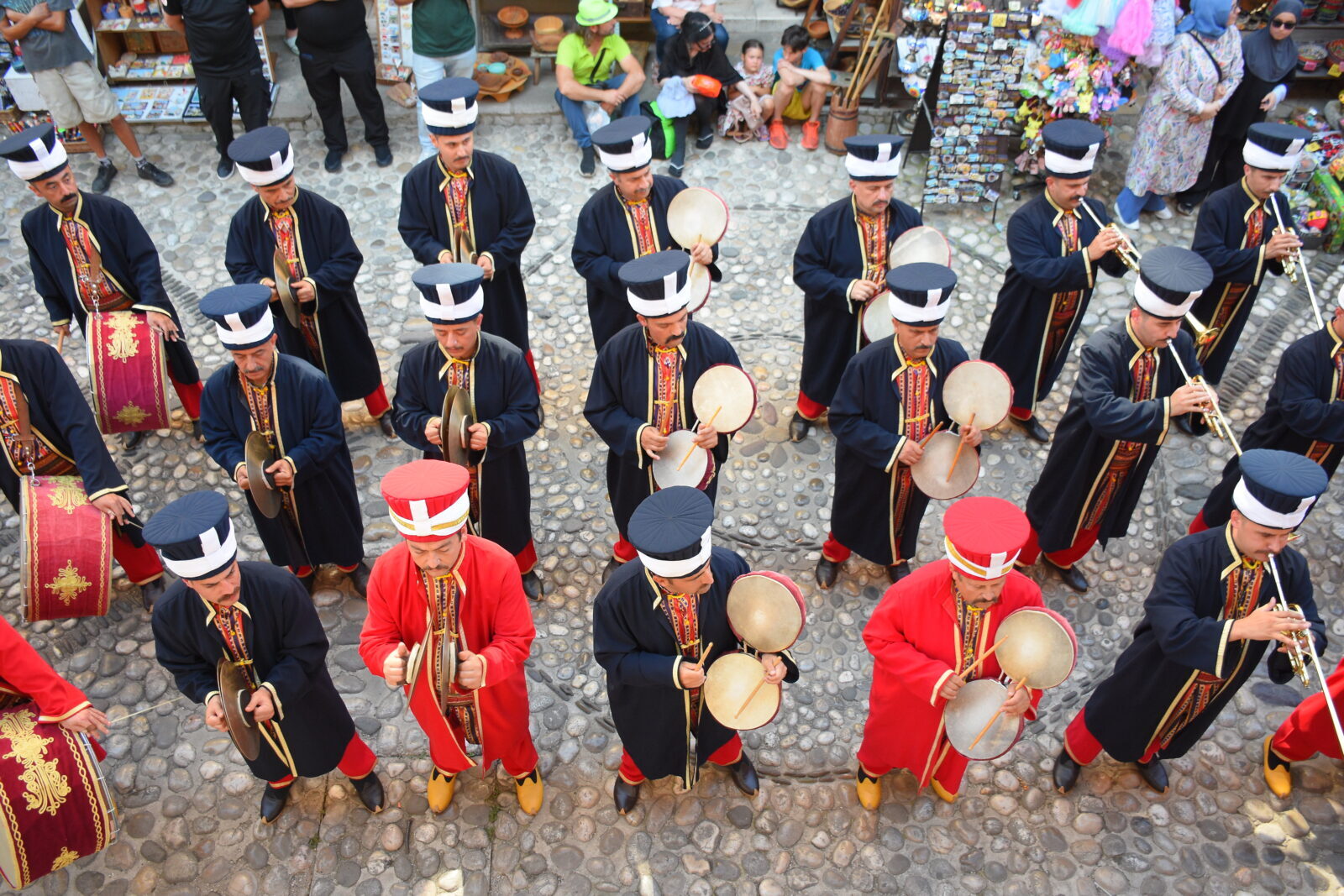Legacy of ‘Mehter’: Turkish military bands and their cultural impact
 Mehteran Union of the Ministry of National Defense, concert in Mostar. Mostar, Bosnia and Herzegovina, June 28, 2024. (Photo by AA Photo)
Mehteran Union of the Ministry of National Defense, concert in Mostar. Mostar, Bosnia and Herzegovina, June 28, 2024. (Photo by AA Photo)
“Mehter” or “Mehteran” in plural, stands as one of the most significant symbols of the Ottoman military and cultural heritage. Known as one of the world’s oldest military bands, Mehter has a storied history that spans from the Seljuks to the modern era.
What is Mehter?
Mehter is a unique ensemble composed solely of wind and percussion instruments, designed to perform in open-air settings.
Historically, Mehter played a crucial role in Ottoman military campaigns, setting the rhythm for marching soldiers, boosting morale and intimidating enemies. In times of peace, the Mehter also served various ceremonial functions, such as announcing the time, performing at state functions, and providing entertainment.

Origins: From Seljuks to Ottomans
The tradition of military music within Turkish history dates back to the Seljuks, who passed this legacy on to the Ottomans.
Mehter, as part of this continuum, was formalized into a structured ensemble during the reign of Sultan Murad I in the 14th century, coinciding with the establishment of the Janissary corps.
Mehter’s primary function was to accompany the Sultan and other high-ranking officials, with different ranks of officials having their own Mehter units of varying sizes.

Instruments and structure
Mehter music, intended for outdoor performance, relies heavily on wind instruments like the zurna (a double-reed wind instrument) and the boru (trumpet), complemented by percussion instruments such as the davul (large drum), nakkare (kettledrum), zil (cymbals), and kos (giant kettledrum). The number of each instrument type in a Mehter band determined its “layers” or “ranks,” with more layers signifying a larger ensemble.
Music’s influence on troops and opponents
The use of music to inspire troops and intimidate enemies is a practice shared by many ancient civilizations.
Mehter’s deafening and rhythmic sounds were intended to boost the fighting spirit of Ottoman soldiers while instilling fear in their adversaries.
This practice finds parallels in other cultures, such as the drum-beating tactics of the ancient Indian and Parthian armies, the trumpet and lyre of the ancient Greeks, and the tambourines and war songs of the Arabs.
Decline and revival of Mehter
The Mehter faced abolition in 1826, alongside the dissolution of the Janissary corps by Sultan Mahmud II, marking the end of an era.
This decision was part of a broader effort to modernize the Ottoman military in line with European practices, leading to the establishment of the Western-style Mizika-ı Humayun (Imperial Band).
Despite this, the Mehter tradition experienced a revival in the 20th century, influenced by rising Turkish nationalism and a renewed interest in Ottoman heritage. Key figures, such as Enver Pasha, championed the revival of Mehter music as a symbol of Turkish identity.
In 1914, the Mehterhane-i Hakani was reestablished, albeit with modifications to fit contemporary tastes and political climates.

Modern Mehter: A symbol of cultural heritage
Today, the Mehter has been institutionalized within the Turkish Armed Forces, particularly through the Mehter unit at the Istanbul Military Museum.
This modern incarnation of the Mehter performs regularly at national celebrations, state ceremonies, and international events, showcasing the rich musical heritage of the Ottoman Empire.
How did Mehter influence Western music?
The influence of Mehter music extended beyond the Ottoman Empire, leaving a lasting impression on Western classical music.
Composers such as Wolfgang Amadeus Mozart, Ludwig van Beethoven, and Georges Bizet incorporated “alla turca” (in the Turkish style) elements into their compositions, inspired by the distinctive rhythms and melodies of Mehter music.
Notable examples include Mozart’s “Rondo alla Turca,” Beethoven’s “Ninth Symphony” and Bizet’s “L’Arlesienne Suite.”

Mehter in popular culture and education
In addition to the official military ensembles, numerous municipal and educational institutions across Türkiye have established their own Mehter bands. These groups perform at a variety of events, from weddings and circumcisions to public celebrations and official openings, maintaining the presence of Mehter music in contemporary Turkish society.
Mehter’s journey from its ancient origins to its modern revival highlights its enduring significance as a symbol of Turkish culture and military history. As the world’s oldest military band, the Mehter continues to captivate audiences with its powerful and evocative performances, serving as a testament to the rich cultural heritage of the Ottoman Empire and its lasting legacy in the world of music.



